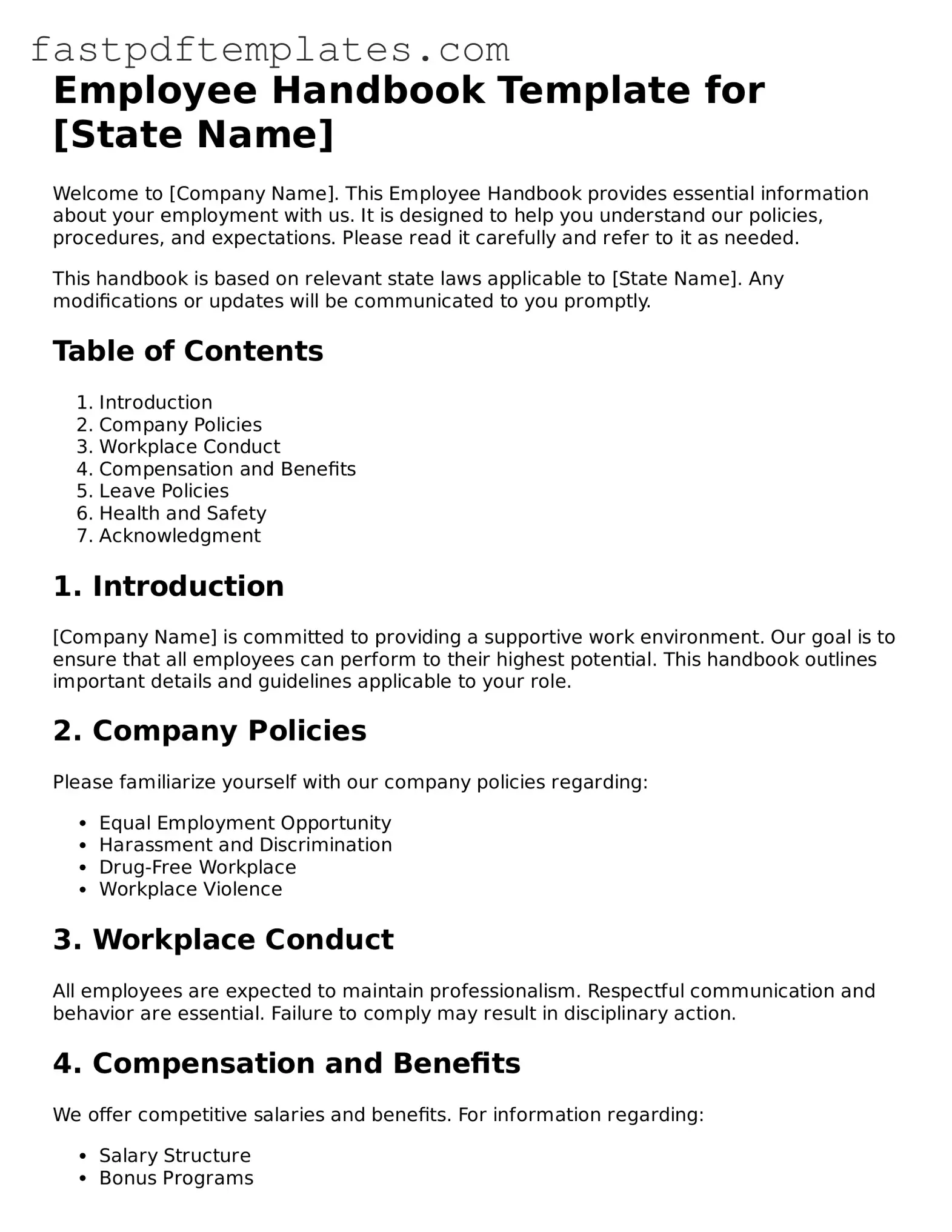Employee Handbook Template for [State Name]
Welcome to [Company Name]. This Employee Handbook provides essential information about your employment with us. It is designed to help you understand our policies, procedures, and expectations. Please read it carefully and refer to it as needed.
This handbook is based on relevant state laws applicable to [State Name]. Any modifications or updates will be communicated to you promptly.
Table of Contents
- Introduction
- Company Policies
- Workplace Conduct
- Compensation and Benefits
- Leave Policies
- Health and Safety
- Acknowledgment
1. Introduction
[Company Name] is committed to providing a supportive work environment. Our goal is to ensure that all employees can perform to their highest potential. This handbook outlines important details and guidelines applicable to your role.
2. Company Policies
Please familiarize yourself with our company policies regarding:
- Equal Employment Opportunity
- Harassment and Discrimination
- Drug-Free Workplace
- Workplace Violence
3. Workplace Conduct
All employees are expected to maintain professionalism. Respectful communication and behavior are essential. Failure to comply may result in disciplinary action.
4. Compensation and Benefits
We offer competitive salaries and benefits. For information regarding:
- Salary Structure
- Bonus Programs
- Health Insurance Plans
- Retirement Options
5. Leave Policies
Employees are entitled to various leave programs, including:
- Paid Time Off (PTO)
- Sick Leave
- Family and Medical Leave
- Bereavement Leave
6. Health and Safety
Your health and safety are our priority. Please adhere to the following:
- Emergency Procedures
- Incident Reporting
- Workplace Safety Guidelines
- Health and Wellness Programs
7. Acknowledgment
By signing below, you acknowledge that you have received and understood this Employee Handbook.
Employee Name: ______________________
Employee Signature: __________________
Date: ________________________________
Thank you for being part of [Company Name]. We look forward to a successful working relationship.
